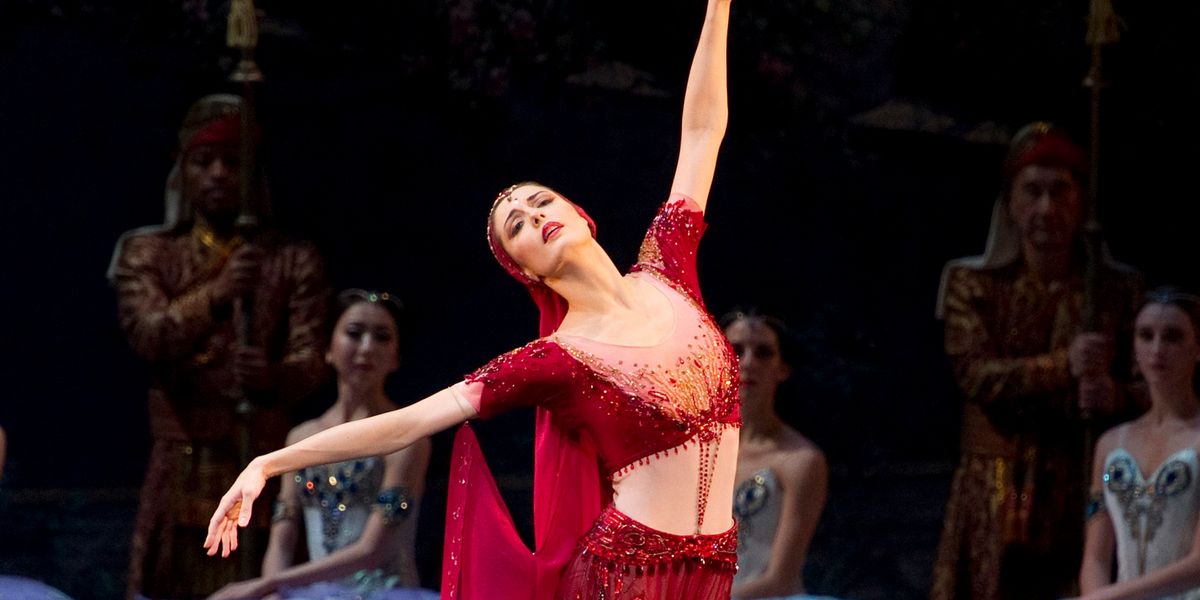In Pursuit of Perfection: How The World's Greatest Artists Transcend Their Imperfections
This story originally appeared in the April/May 2015 issue of
Pointe.
“It was perfect,” Nina says of her debut as Odette/Odile. It’s the last scene of the 2010 psychological thriller Black Swan and these are the last words this character, the ballerina played by Natalie Portman, will ever speak. Her relationship with perfection—physical, technical, artistic—has haunted her throughout the movie and finally, changing from Odile’s black tutu to Odette’s white one, she pulls a shard of broken mirror from a wound beneath her ribs. Could there be a better symbol for the dark side of a dancer’s pursuit of perfection? The studio mirror, so innocent and embracing in those first delightful years of dance class, has become a maddening dagger of constant criticism.
The soprano Maria Callas, revered by generations of opera-lovers, was famously imperfect in her technique and was cherished all the more for it. The pianist Vladimir Horowitz played with such phenomenal elegance and fire that no one cared about the flubs. Most painters, even those with superb draftsmanship, move beyond or beneath correct technique to brushwork of extravagance and strangeness. And a poet like Emily Dickinson, who turned grammar on its ear—who’s to say she didn’t achieve her own technical perfection, a new grammar created for the bubble of perception in which she lived and wrote?
Classical dance is different from these arts, perhaps because it begins as an athletic endeavor. Early on, the challenge of training one’s body to move in Euclidean traceries and celestial spheres is a beguiling sort of sport. The energized tendu, pirouettes with a stable axis, jumps with life and loft, placement that is lightly rooted yet yearning to fly—learning this embodied language of secret meanings is fun. But as the athleticism of ballet matures into the art of ballet, a change occurs. The technical refinement that is a professional necessity becomes, as well, a spiritual quest.
“Better than perfection is the ability to let go.” —Veronika Part
All artists feel this quest to some extent, but none feel it in every joint and muscle the way dancers do, or face it daily as dancers must, in the alternate universe of the studio mirror, a fifth dimension that reflects all flubs and flaws, not to mention ounces and pounds. One of the powerful tensions of classical dance is that this profoundly physical art form so often expresses fleshless states, both existential and supernatural. The truer a dancer’s line and the more pure her technique, well, the more convincing the airy, soulful illusion. This is a reality that the tenets of political correctness cannot change.
Furthermore, young dancers on a career track develop an eye highly sensitive to, and sometimes distorting of, flaws that the non-dance world will never perceive. Rudolf Nureyev ardently wished his legs were longer and he worked devilishly to get the appearance of length. The young Gelsey Kirkland, so uniquely gifted, desired instead to look and dance like Suzanne Farrell; it took years for Kirkland to accept her own body and its brilliance. Every dancer has some beef about his or her instrument, some built-in and immutable issue of anatomy, proportion or silhouette which keeps perfection just beyond reach.
 Part in “Swan Lake.” Photo by Gene Schiavone, courtesy ABT.
Part in “Swan Lake.” Photo by Gene Schiavone, courtesy ABT.
And yet, in truth, there is no actual standard. As the critic Matthew Gurewitsch notes, “Whereas high C is high C, an arabesque is the arabesque of a particular body. So a ‘perfect,’ Platonic arabesque may not even exist.”
One could argue that this pursuit of an abstraction—the “Platonic arabesque”—is not only necessary in an art form as physically demanding as ballet, it is bound up in ballet’s philosophy of transcendence, its belief that the body itself can speak to classical ideals of harmony, aspiration and liberation. American Ballet Theatre’s Veronika Part, a ballerina trained at the Vaganova Academy and possessing a classical line as close to perfection as it gets, says, “Every single day until the last day of your dance career you have to work, you have to strive to achieve perfection. But better than perfection is the ability to let it go. When you’re onstage you have to know that it’s impossible to be perfect and you just rely on your experience and talent. The great performance is when you feel, ‘Oh my god, I’m just completely free.’ This is amazing.”
The ballerina Heather Watts, who joined the New York City Ballet in 1970 and was a favorite of choreographer George Balanchine, arrives at the same conclusion but from a different path. “Perfection,” she says, “is a moving target: Each day you begin anew, trying for a higher bar every time you go out onstage.” Watts suggests that dancers confuse perfection with security, “which is doing the same pirouette you did in rehearsal. As dancers we like to be ready and rehearsed and precise and assured and confident. But Mr. Balanchine was really into calculated risk-taking, trying to reach an ideal that was an imaginary hope. It’s hard and scary to risk everything in a live performance, but we were raised to that. In class we risked, in rehearsal we risked, we did it all day long so that we’d be ready to risk at night. You could say the ‘perfection’ was that the performance was alive.”
Imagination makes its own rules. In the famous essay “Some Lines from Whitman,” the critic Randall Jarrell quotes a section from Walt Whitman’s immortal poem Song of Myself and then writes, “There are faults in this passage, and they do not matter.” In other words, artistry that possesses a flashing life force—daring, reaching, giving—will always contain moments that are not quite correct. This goes double for performance, which only happens once and cannot be edited. It’s the life we remember: the singing of the self.





